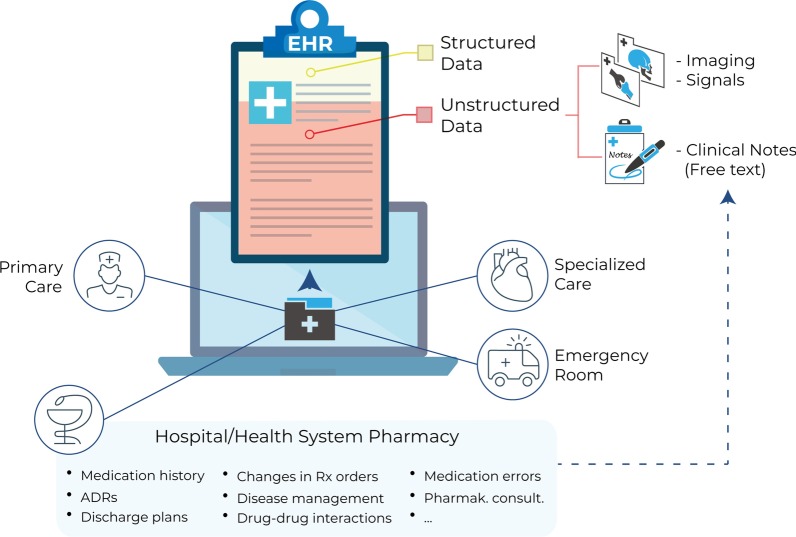Fig. 1.
Electronic health records (EHRs) contain a large amount of patient-centered clinical data. EHRs are generated and stored in virtually all healthcare departments, including primary care and specialized care settings, emergency rooms, and hospital pharmacies. Most of the information captured in EHRs is unstructured (red shade), including imaging results/signals and free-text narratives jotted down by health professionals (clinical notes). Hospital pharmacists’ documentation of their interventions generate a vast amount of important clinical data, including patients’ medication history, adverse drug reactions (ADRs), discharge plans, changes in prescription (Rx) orders, disease management, drug–drug and other interactions, and pharmacokinetic consultations

